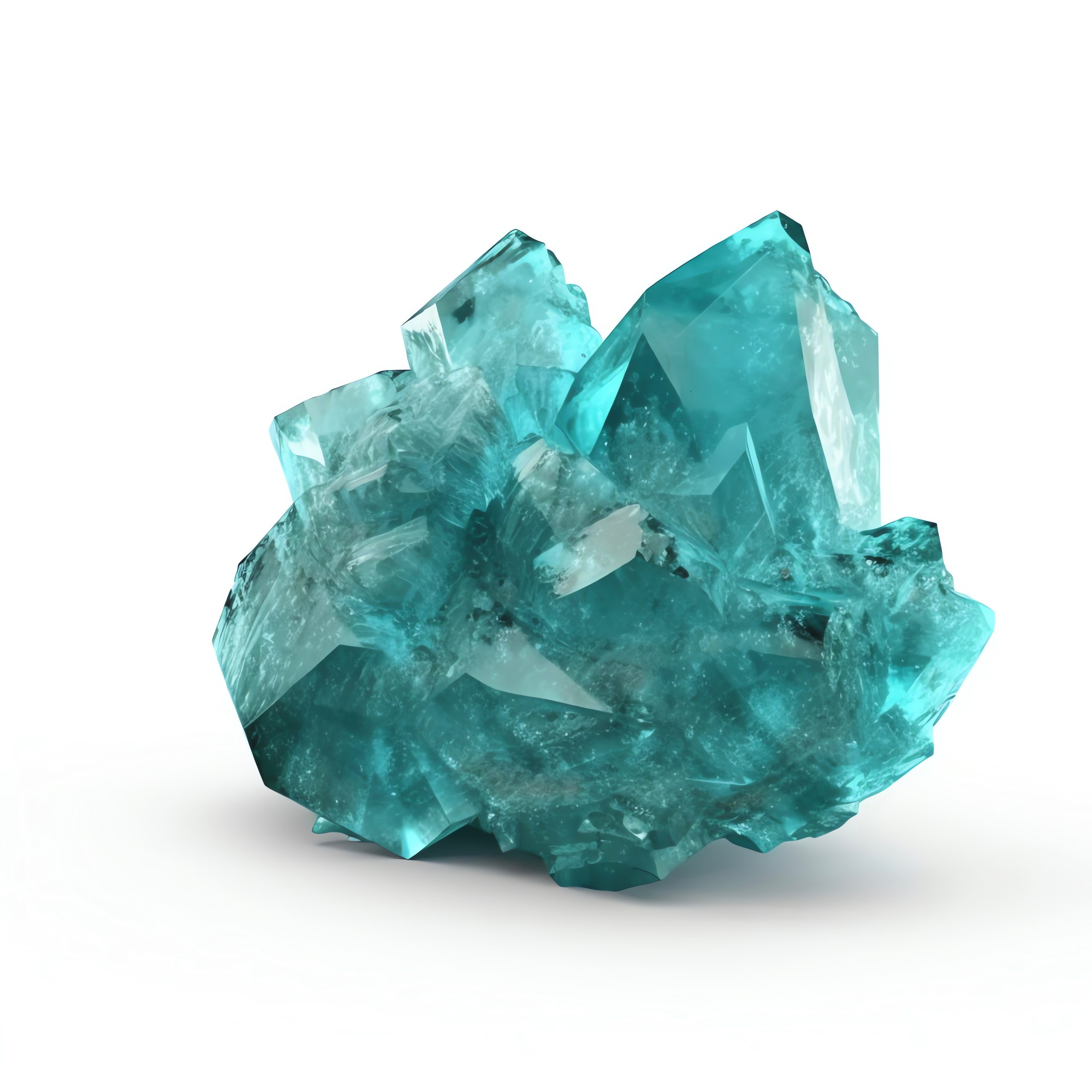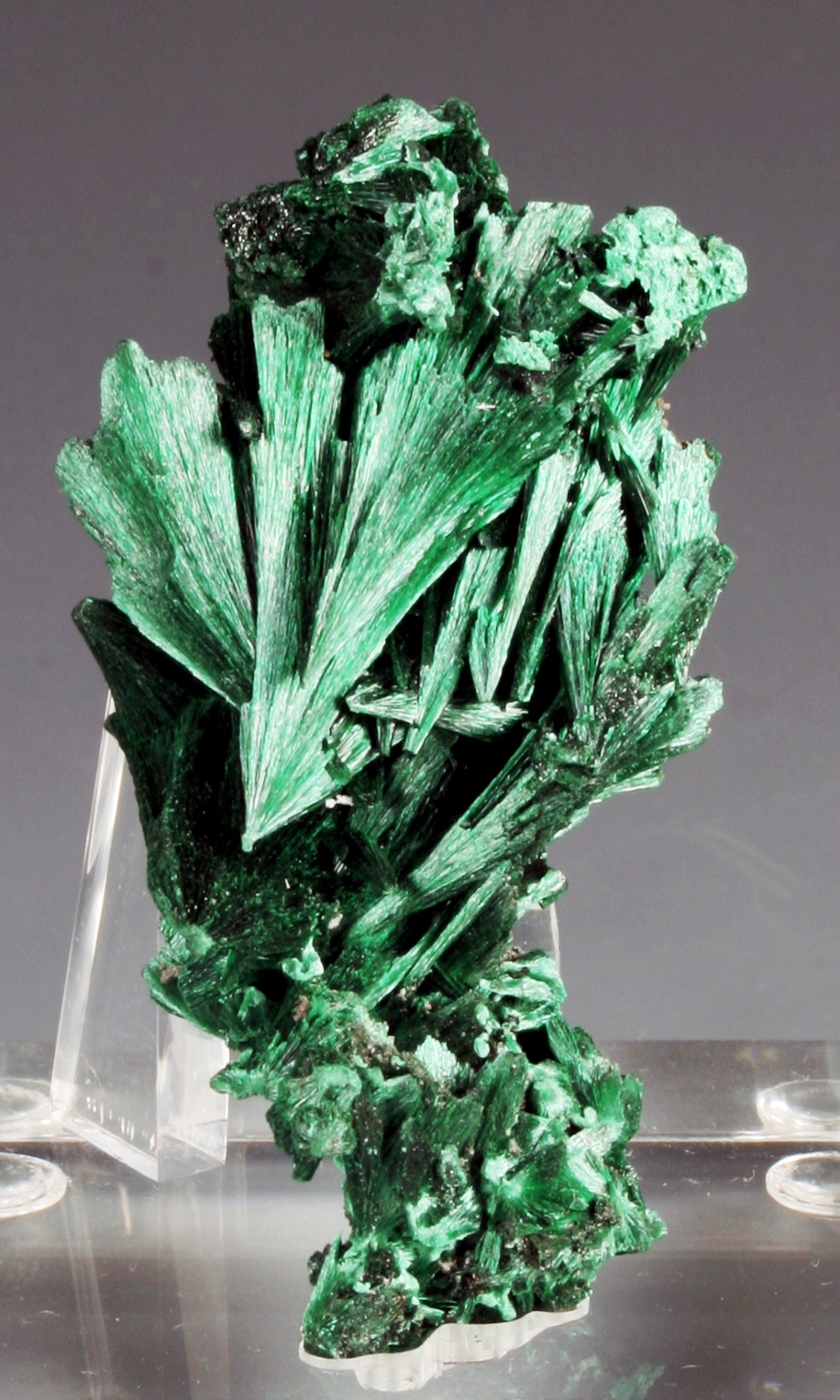Apatite is the name of a group of phosphate minerals with similar chemical compositions and physical properties. The primary Apatite group includes Fluorapatite, Chlorapatite, and Hydroxylapatite. The extended super-group includes additional minerals such as Pyromorphite, Mimetite, and Vanadinite. Apatite is named for the Greek word apatao, which means “deceit”, since it is similar in appearance to many other minerals such as Beryl, Milarite or Phenakite.
It is difficult to distinguish between individual members of the primary Apatite group. A designation of the specific Apatite type is not usually made, being called simply “Apatite” by collectors and dealers. However, most of the fine crystals and collector specimens are of the Fluorapatite type, which is by far the most common form.
Composition and Chemistry
The composition of the primary Apatite Group is calcium fluoro-chloro-hydroxyl phosphate. The chemical formulas for the most common members are:
Fluorapatite – Ca5(PO4)3F
Chlorapatite – Ca5(PO4)3Cl
Hydroxylapatite – Ca5(PO4)3OH
It is very common as an accessory mineral in igneous and metamorphic rocks, where it is the most common phosphate mineral. However, the mineral occurs usually as small grains which are often visible only in thin sections. Coarsely crystalline Apatite is usually restricted to pegmatites or gneiss derived from sediments rich in carbonate minerals, skarns, or marble. It is also found in sedimentary rock as grains eroded out of the source rock.

This mineral occurs in many colors including colorless, white, yellow, brown, gray, red, pink, purple, blue, and green. Some specimens are multicolored.
Apatite belongs to the Hexagonal Crystal System, Dipyramidal Crystal Class. It is the defining mineral for 5 on the Mohs scale. Luster is vitreous to sub-resinous. It can be distinguished in the field from beryl and tourmaline by its relative softness. Specimens from certain localities will fluoresce orange yellow in shortwave ultraviolet light.
Apatite generally forms as well-shaped hexagonal crystals, which may be prismatic, dipyramidal, and stubby. Also as flat, tabular plates, columnar, in stacked parallel growths, as globular masses, acicular, grainy, stalactitic, botryoidal, and earthy. Also, in enormous beds of massive material, from which industrial phosphorus is mined.
Uses of Apatite
The primary commercial use of Apatite is as a fertilizer. Other uses include phosphoric acid, hydrofluoric acid, ore of rare earth elements, and pigments. Apatite is also a popular collector’s mineral, and some transparent specimens are faceted for collectors. The gemmy violet and reddish forms are very much valued by collectors and command high prices.
Noteworthy Localities of Apatite
The vast majority of collector specimens are of the Fluorapatite type, thus the localities described here are generally for Fluorapatite. Important Apatite localities in Europe include Ehrenfriedersdorf, in the Erzgebirge, Saxony, Germany, a classic locality which is also the type locality for this mineral. Panasqueira, Portugal, is well-known for its thick and gemmy tabular Apatite crystals.
Deep blue crystals come from Sludyanka, in Lake Baikal area, Russia; and interesting forms, especially botryoidal, come from the Lovozero Massif, Kola Peninsula, Russia. Purple Apatite comes from the Mawi Pegmatite, Nuristan Province, Afghanistan. Pink and red crystals occur in Pakistan in the Hunza Valley, Gilgit; and at Skardu at Shengus, Dassu, and the Shigar Valley. Beautiful greenish-yellow Apatite with an excellent luster and transparency have been coming from the Imichil area in Morocco.
In Brazil, deep blue Apatite crystals come from Ipira, Bahia; and the state of Minas Gerais has several outstanding occurrences such as the Sapo mine, in Conselheiro Pena; Golconda, in Governador Valadares; Pederneira, in Sao Jose da Safira; and Galileia. Pink Apatite has come from the La Marina Mine, Boyaca, Colombia. One of the most famous localities of Apatite is Cerro de Mercado, Durango, Mexico, where gemmy prismatic yellow crystals are plentiful.
In Canada, large glassy Apatite crystals in orange Calcite have come from the Yates mine, Otter Lake, Quebec. Very large crystals also come from Ontario, at Bear Lake in Tory Hill, and at Cardiff, both in Haliburton County.
In the United States, the state of Maine has several excellent Apatite localities. Beautiful violet crystals come from the Mount Apatite area (especially the Pulsifier Quarry in Auburn, and the Mt. Rubellite Quarry in Hebron,) Androscoggin County. Also in Maine are the Noyes Mountain Quarry (Harvard Quarry) and the Emmons Quarry, Uncle Tom Mt, both in Greenwood, Oxford County.
In New Hampshire, Apatite was found in the Palermo No. 1 Mine, Groton, Grafton County. The Acushnet Quarry in Bristol County, Massachusetts, produces an aesthetic association of transparent Apatite associated with sparkling dark Chlorite. Good specimens were once found in the Strickland Quarry, Portland, Middlesex County, Connecticut.
Large opaque Apatite crystals, usually light blue in color, have come from Franklin, Ogdensburg (Sterling Hill), and Hamburg, all in Sussex County, New Jersey; and across the state line in Amity, Orange County, New York. Beautiful pink and purple crystals with excellent transparency have come from the Foote Mine, Kings Mountain, Cleveland County, North Carolina.
Prismatic green Apatite crystals, closely resembling Tourmaline, come from the Himalaya Mine, Mesa Grande, San Diego County, California. Light blue crystals have come from the Butte mining district, in Silver Bow County, Montana; and large yellow crystals from the Fulford District, Eagle County, Colorado and Iron Mountain, Iron County, Utah.
For more information about this mineral, visit mindat.org or join our Facebook group to network with others of like minds. Visit us on Instagram and/or join us at our Gem and Mineral shows.
By Bill Jones, Sidewinder Minerals














